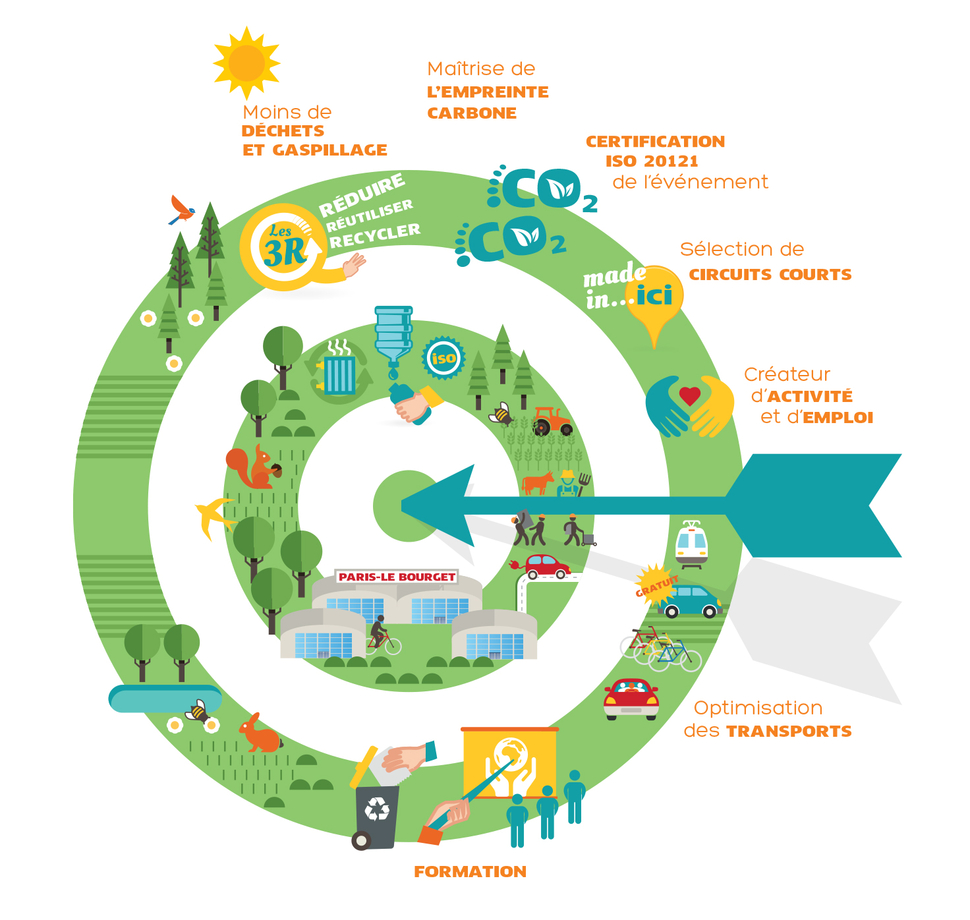The objective of the Climate Change conferences was and is, to achieve a binding and universal agreement on climate, from all the nations on the world. The shared international agreement on climate changes, is to keep global warming below 2 degrees Celsius. This year the conference is organized in France. France acts like a model country. It is one of the only developed countries in the world to decarbonise electricity production and fossil fuel energy while still providing a high standard of living. The country generates 90% of its electricity from zero carbon sources. But what did France more for the event in particular? And why did they do so?
For the first time agreements about reduction of gas emission were made at the Rio conference in 1992. The long-term objectives were presented and the world was ready for change. A few years later the climate top in Copenhagen admitted that the aims were not realized, though. During the conference in Copenhagen the adaption of the common objectives was discussed. The nations realized that the implementations of goals was much more complex. The process of reaching the goals, was acting in socio-technical systems where different actors of social, technical and business sectors were playing a role in. Nations agreed that it wasn't only about the gass industry and technical issues, but it was also about behaviour, people and the market. The last years the amount of conferences increased. Collaboration seemed to be more important than expected.
Since the last ten years 'green' has become a popular marketing topic. It can be used as a word for hyping your product, service, company, way of living etc. Green washing powder, green light bulbs, green food, green holidays, green clothes, green paper: everything green! Advertisements with the word 'green' in it, are used in every branch. Actually, this shows how many different sectors are involved in the climate change now. United nations, market sectors, companies and users are all trying to reach the same goal: a greener world.
The conference of 2015 is organized in Paris, wherefore Paris designed a temporary and sustainable city. This time, a conference to promote the circular economy and innovation. More than 50 companies were working together to organize the event, with the 'R' as common topic. The 'R' for reducing consumption of resources, reusing products and recycling waste. The sustainable city is lighted up by the energy of wind trees, visitors get there by shared transportation manners and food is provided by locals, to promote reducing consumption of resources. The building is made out of local Jura wood and will be donated afterwards, as an example of reusing products. To show an example of how waste can be recycled, all the used papers are sorted and recycled with the expertise of La Poste. The papers will be recycled and reused by a graphic factory in the surrounding.
After the idea of a green industry, and later on the collaboration of different fields, now the theme 'practical implementation on local level' seems to be promoted during the event of 2015. A circular economy is promoted as a new main focus point. A circular economy is probably easier to work out first in small niche segments, and expand later on. The good thing is that the Paris directly shows an example of this aim. And if this aim will be an success? The idea will be expanded.
Published by Hanna van der Ploeg
